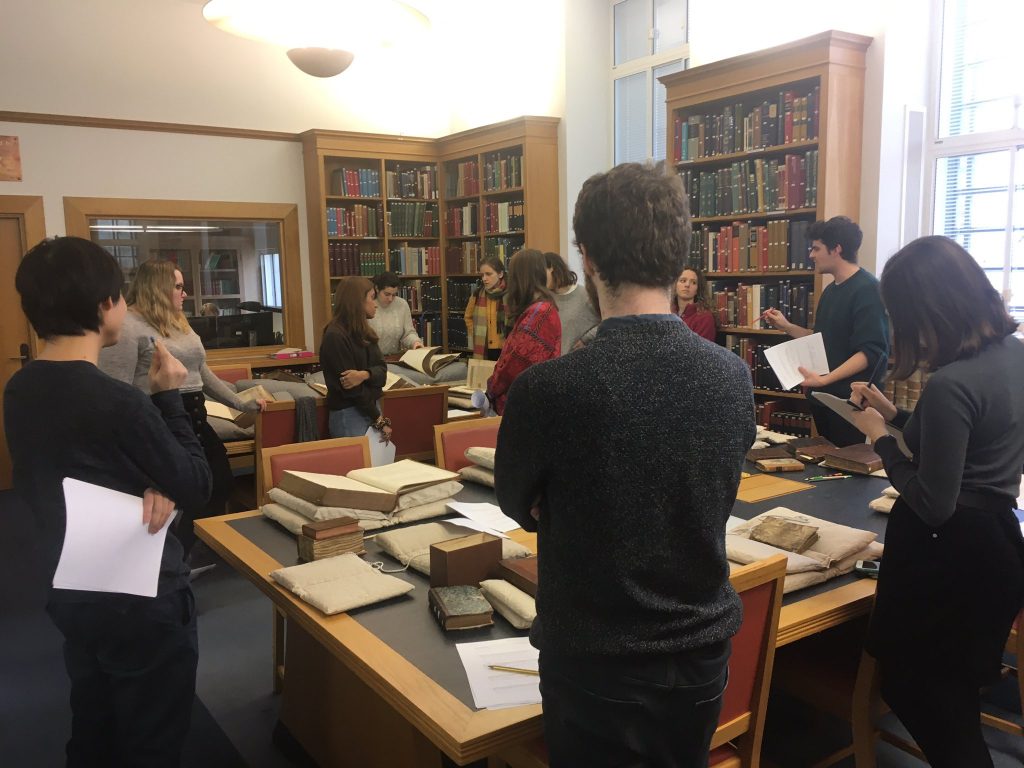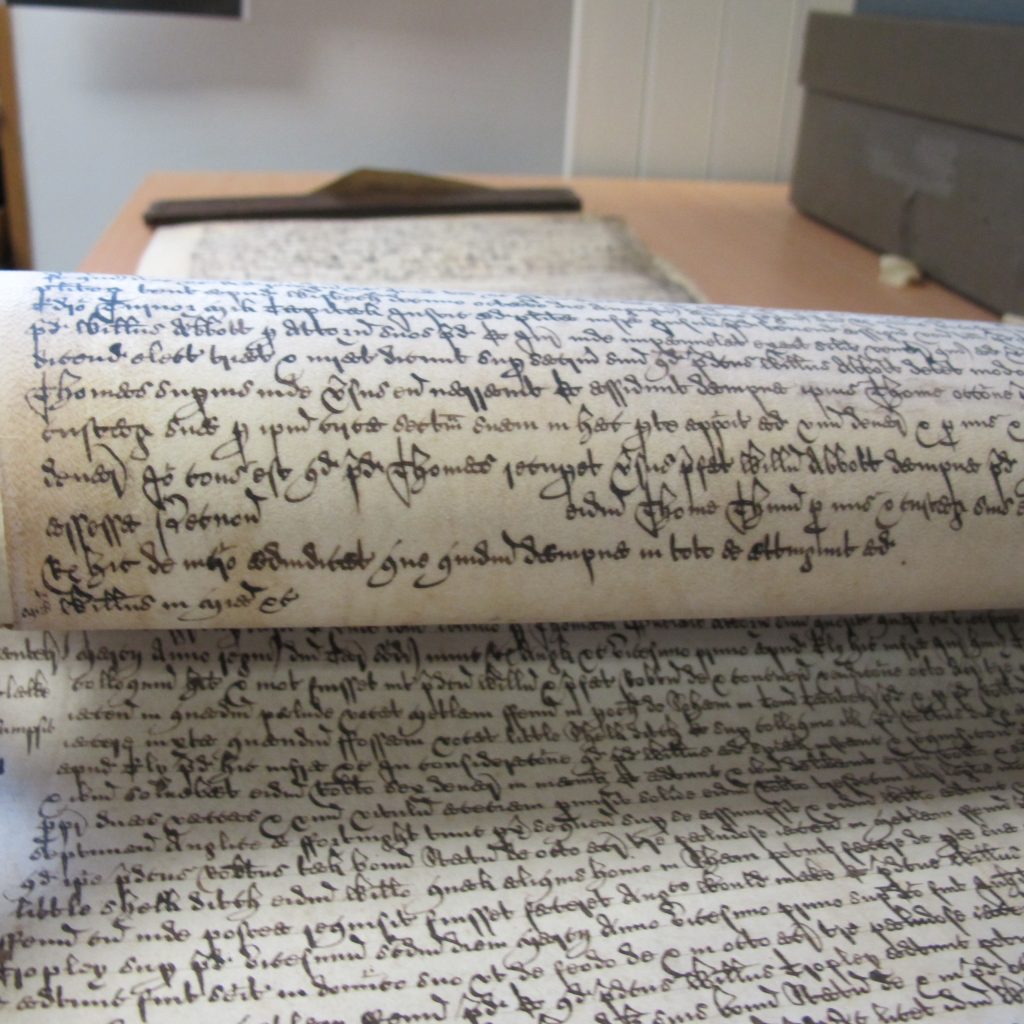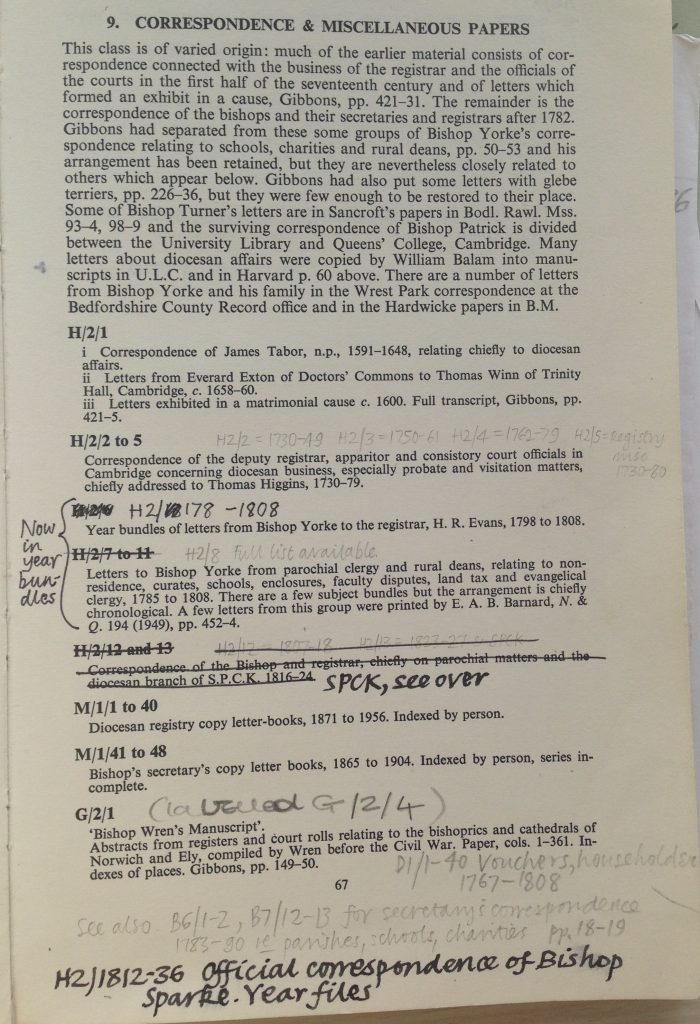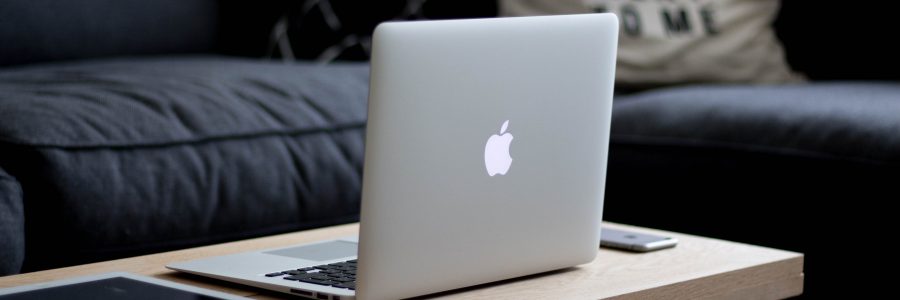
Spreadsheets, shelflists & scones: Special Collections works from home
On Wednesday 18th March the University Library closed its doors to readers, in line with government advice around COVID-19. That afternoon saw many of Cambridge’s students and academics streaming into the building to borrow as many books as possible to occupy themselves during the closure period, and one month later we remain uncertain as to when we might be able to open the doors again. That week was a strange one for curatorial, project and reader services staff in and around the Rare Books and Manuscripts reading rooms in the NW corner of the UL. Closely tied as we are to our physical heritage collections (which include something like 1,000,000 rare books, thousands of medieval manuscripts, archives, photographs, objects and much more) we felt keenly our impending separation from the collections we feel so privileged to look after.
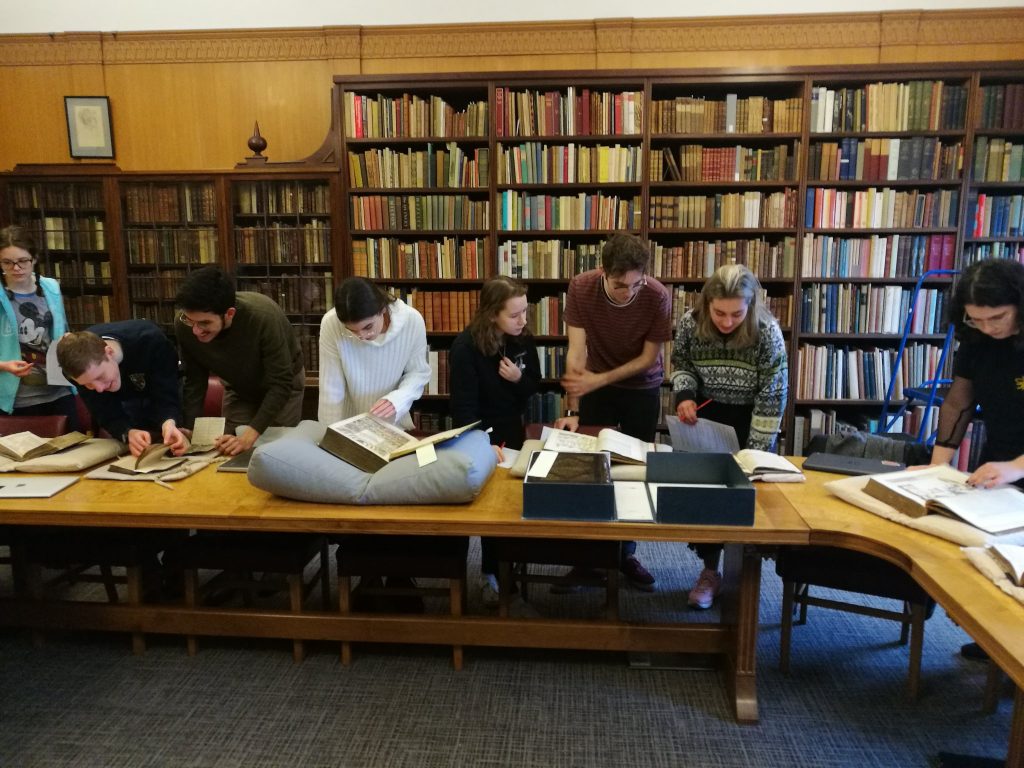
Once we had made sure those collections were secured for a lockdown of unknown duration our thoughts (like the users in the Library on 18th March) turned to how we might occupy our work hours at home. Ordinarily our working days are heavily focused around physical collections, whether it’s reader service assistants and superintendents in the reading rooms helping users to find, use and understand our collections, or curators cataloguing new acquisitions and facilitating hands-on classes and visits (as above). Now, working from home, our team is very much focused on two tasks: (1) promoting our collections digitally, by sharing digitised material on the Cambridge University Digital Library through our social media channels, and (2) working systematically to improve collection descriptions and catalogue records online. We are also making sure that we stay in touch as a team, holdings regular catch-up meetings via Teams, and entertaining eachother through a Whatsapp group with pictures of our pets and baking efforts. Some have even recreated our UL Tea Room breaks virtually (sadly sans cheese scones), with a Teams-based coffee break every day!
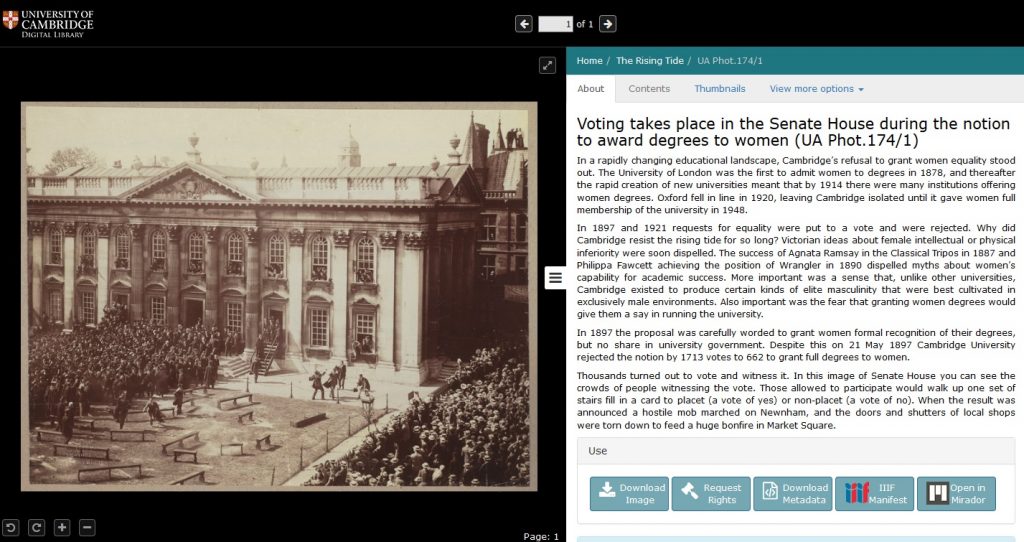
The first part is relatively easy. The Digital Library is an amazing gathering of digitised special collections not just from the main UL but across Cambridge’s network of libraries. Highlights include Isaac Newton’s papers, historic University archives, content from the ongoing Greek manuscripts project (which includes many college manuscripts), and highlights from The Rising Tide (our most recent exhibition around women at Cambridge, bringing together material from many institutions across the city). Whatever your research interests (or curiosities) we encourage everyone to visit the website and either browse the content by collection or use an advanced search to hunt for material relevant to your interests. Another good place to find images of and information about special collections material online is through our past exhibitions pages. Here may be found the contents of many physical (as well as online-only) exhibitions, on subjects as diverse as the Russian Revolution, understanding the womb in the seventeenth century, Don Quixote and the Battle of Waterloo. Just keep scrolling down the exhibitions page and see what you find!
The second part of our work – and really our main focus – is improving online records for our collections to make things easier to find for our users (and us!). In order to do this several members of the Rare Books team filled their bicycle baskets on the last day with a number of the handwritten and interleaved catalogues of our holdings. Above is (L) a volume of our interleaved and annotated STC catalogue (a heavy set many of our regular users will know well, giving shelfmarks for the UL’s pre-1640 English holdings) and (R) the handwritten shelflist for the ‘Rel’ collection of significant bookbindings (from the French relieure). Using these alongside our online iDiscover catalogue allows us to check systematically that (a) all books known to be held are recorded in the online catalogue (like socks in the washing machine records do occasionally disappear, and some items never made it into the Library’s first automated catalogue in the first place), and (b) that existing records are of a suitable standard (one of our jobs at the moment is to improve some of the more basic older records to modern standards of cataloguing). Along the way we can tidy up small problems like erroneous shelfmarks in iDiscover and make sure our catalogues reflect accurately what we hold (adding a note in the record that we only hold volume one of a set, for example, or that we may only have a fragment of an ephemeral piece of early printing pasted within the binding of a later book). One laborious task is the addition of what we call ‘item records’ to records in iDiscover. These give a unique number to each entry and will – in the fullness of time – allow rare books to be ordered online through the catalogue. We are also still acquiring new (old) material, with many booksellers being happy for us to process purchases when we return to the Library.
Colleagues in Archives & Modern Manuscripts also remain busy from home, primarily engaged in transcribing material to be presented online. Louise from the Manuscripts Reading Room is working on a 700-page list of pre-1970 Cambridge PhD theses, which at some point will be fed into the iDiscover catalogue. Sally is beavering away at the Isle of Ely assize files, having had the foresight to take pictures (above L) of some of the material for transcription at home during lockdown. The project is throwing up lots of fascinating stories about the lives of everyday Fenland people, some of which have made it onto this blog already. Finally Sian continues to churn out blog posts, alongside her work to prepare the printed 1971 catalogue of the Ely Diocesan Records for entry into ArchivesSpace, the new online platform for Cambridge archives which will go live later this year. The structure of the old catalogue needs rethinking (Sian hopes that a new classification will allow users to find what they need more easily) and the many handwritten notes, corrections and additions (see above R) need incorporating into the online version. Making sense of these additions is not simply a matter of data entry because of the need to understand and interpret the sometimes complex documents, which can cause headaches for even the most experienced archivists!
So we continue to beaver away, making improvements which we are sure will benefit our users (physical and online) when the UL building reopens. In the meantime, we remain available to answer questions (albeit without access to the collections to which they might relate) and welcome emails to rarebooks@lib.cam.ac.uk (for rare books enquiries) and mss@lib.cam.ac.uk (for archives and manuscripts enquiries). Do please engage with us on Twitter too, and see our webpages for detailed information on our collections. We look more forward to welcome our readers back than you will know. I leave you with one more image of us doing what we enjoy the most: sharing our collections!
Stay safe.
